Topics
- Page Path
-
- HOME
- TOPICS
- Topics
- Topics
-
- Adolescence Medicine (4)
- Allergy (60)
- Cardiology (79)
- Critical Care Medicine (10)
- Developmental and Behavioral Medicine (24)
- Emergency Medicine (5)
- Endocrinology (60)
- Gastroenterology (63)
- General Pediatrics (45)
- Genetics and Metabolism (24)
- Hematology (15)
- Immunology (14)
- Infection (72)
- Neonatology (Perinatology) (119)
- Nephrology (Genitourinary) (52)
- Neurology (94)
- Nutrition (28)
- Oncology (16)
- Neurobehavior (12)
- Pulmonology (30)
- Rheumatology (3)
- Other (35)
- Review Article
- Endocrinology
- Growth plate closure and therapeutic interventions
- Ja Hyang Cho, Hae Woon Jung, Kye Shik Shim
- Clin Exp Pediatr. 2024;67(11):553-559. Published online October 28, 2024
-

Height gains result from longitudinal bone growth. Upon adequate growth, growth plate closure limits longitudinal bone growth. To date, gonadotropin-releasing hormone analogs, aromatase inhibitors, C-type natriuretic peptide analogs, and fibroblast growth factor receptor 3 inhibitors have been studied or used as therapeutic interventions to delay growth plate closure and increase human height. The development of more effective therapeutic modalities for short stature, precocious puberty, and skeletal dysplasia is anticipated.
- Clinical Note
- Immunology
- Comparative analysis of rare periodic fever syndromes including the first Korean case of hyperimmunoglobulinemia D and periodic fever syndrome
- Yoonsun Yoon, Hyun Seo Kim, Jung Ok Shim, JungHwa Lee
- Clin Exp Pediatr. 2024;67(10):550-552. Published online September 24, 2024
-

- Original Article
- Neonatology (Perinatology)
- Protective effect of recombinant interleukin-10 on newborn rat lungs exposed to short-term sublethal hyperoxia
- Hyeon-Soo Lee, Young-Joon Ryu, Min-Jae Lee
- Clin Exp Pediatr. 2024;67(10):540-549. Published online September 27, 2024
-

Lung injury is generated from the early stage of hyperoxia through the biologic effects of cell death and inflammatory response, which eventually leads to evolution of bronchopul-monary dysplasia. Therefore, a protective measure against hyperoxia-induced lung injury is needed. The present study observed that anti-inflammatory cytokine, interleukin-10 had protective effects on newborn rat lungs from injury induced at the early stage of hyperoxia, by preventing cell death and down-regulating inflammatory response.
- Nutrition
- Energy drink consumption among Korean adolescents: prevalence and associated factors
- Jee-Seon Shim, Jeong Mi Lee
- Clin Exp Pediatr. 2024;67(10):531-539. Published online September 24, 2024
-

Question: How prevalent is energy drink consumption among Korean adolescents and what are the associated factors?
Findings: The prevalence of energy drink consumption among Korean adolescents increased from 3.2% in 2014 to 12.2% in 2019. Energy drink consumption varies according to sociode-mographic and individual factors.
Meaning: Policies and educational strategies are needed to reduce energy drink consumption in adolescents.
- General Pediatrics
- Effect of online infant care training and postpartum counseling based on Meleis' transition theory on mothers' readiness for care and breastfeeding: a randomized controlled trial
- Fatma Şule Bilgiç, Gülçin Bozkurt
- Clin Exp Pediatr. 2024;67(10):521-530. Published online September 27, 2024
-

Question: Do interventions based on Meleis' transition theory affect mothers' readiness for baby care and breastfeeding?
Findings: We found a statistically significant difference between the intervention and control groups in mothers' readiness for newborn care and breastfeeding (P<0.001).
Meaning: This intervention increased breastfeeding rates while ensuring that mothers were ready to care for their babies and prepared for the role of motherhood.
- Editorial
- Immunology
- Utility of eosinophil granule proteins in management of pediatric chronic cough
- Chang-Keun Kim
- Clin Exp Pediatr. 2024;67(10):519-520. Published online April 17, 2024
-

· Pediatric chronic cough often involves eosinophilic inflammation; however, objective measurements are not routinely used in treatment decisions.
· Accurate biomarkers of eosinophil activity, such as eosinophil-derived neurotoxin (EDN) and cationic proteins (ECP), should be used. EDN, which overcomes the shortcomings of ECP, recently received approval for use in Korean healthcare settings.
· EDN and ECP can play a role in treatment period and drug selection decisions.
- Review Article
- Developmental and Behavioral Medicine
- Effect of pesticide exposure on stunting incidence: a systematic review and meta-analysis
- Sani Rachman Soleman, Yaltafit Abror Jeem, Muhammad Fathi Banna Al Faruqi, Mahdea Kasyiva, Vita Widyasari, Kuswati Kuswati, Nur Aini Djunet, Muflihah Rizkawati, Ety Sari Handayani
- Clin Exp Pediatr. 2024;67(10):510-518. Published online September 24, 2024
-

This review aimed to determine whether pesticide exposure is associated with stunting in children. The 13 included studies agree that pesticide exposure is not correlated with stunting incidence regardless of substance type (organophosphate and pyrethroid). Heterogeneity appeared with age covariate as potential confounding. The evidence of this study is challeng-ing, as the adverse effects of pesticides grossly occurred. The protection of children is warranted for preventing future neurodevelopment issues.
- Neonatology (Perinatology)
- Demographic transition in South Korea: implications of falling birth rates
- Chae Young Kim, Sung-Hoon Chung
- Clin Exp Pediatr. 2024;67(10):498-509. Published online June 27, 2024
-

· Since 1960, South Korea's TFR decreased from 6.33 to 0.78 in 2022, below the 2.1 replacement level since 1983, with women's average age at first marriage rising to 31.3 in 2022.
· Policies needed: financial incentives, longer parental leave, better childcare.
· The U.S. (15.3% immigrants) and Germany (18.8%) use immigration to maintain demographic stability, a strategy South Korea is considering.
- Endocrinology
- Two- versus one-bag fluid delivery in pediatric and adolescent diabetic ketoacidosis: a systematic review and meta-analysis
- Maya L. Nasser, Joseph Nasr, Reem B. Zalloum, Nathanael Q.E. Yap, Natalie E. Bourdakos, Shahid Miangul, Tara A. Betts, Hayato Nakanishi, Christian A. Than, Serge Jabbour
- Clin Exp Pediatr. 2024;67(10):486-497. Published online June 27, 2024
-

· The safety and efficacy of the two-bag versus one-bag system for treating patients with diabetic ketoacidosis (DKA) < 21 years remains unestablished.
· Our meta-analysis demonstrated similar safety outcomes but sooner DKA resolution and shorter mean response time for intravenous fluid changes for the two-bag system.
· This preliminary evidence suggests that the two-bag system has some advantages in efficacy, but further studies are needed to evaluate their extent.
- Allergy
- Skin and oral intervention for food allergy prevention based on dual allergen exposure hypothesis
- Kiwako Yamamoto-Hanada, Yukihiro Ohya
- Clin Exp Pediatr. 2024;67(10):477-485. Published online June 14, 2023
-

To prevent food allergy in infants, based on the dual allergen exposure hypothesis, we recommend a personalized approach consisting of both skin intervention (eczema treatment to achieve early remission and well-controlled skin without eczema to prevent percutaneous immunoglobulin E sensitization) and oral intervention (early allergenic food introduction).
- Letter to the Editor
- Gastroenterology
- Pediatric abdominal ultrasound training program for pediatricians
- Soon Chul Kim
- Clin Exp Pediatr. 2024;67(9):474-476. Published online August 20, 2024
-

- Original Article
- Genetics and Metabolism
- Interleukin (IL)-1B and IL-1 receptor antagonist gene polymorphisms in children with primary immune thrombocytopenia
- Seham Mohamed Ragab, Wafaa Moustafa Abo ElFotoh, Mahmoud Ahmed El-Hawy, Eman Abdelfatah Badr, Saara Khairat Ali Mostafa, Mai El-Sayad Abd El-Hamid
- Clin Exp Pediatr. 2024;67(9):465-473. Published online July 24, 2024
-

· Polymorphisms in interleukin (IL)-1B and IL-1 receptor (IL-1R) antagonists may significantly affect the pathogenesis of immune thrombocytopenia (ITP).
· IL-1B and IL-1R antagonist gene polymorphisms are correlated with severity and susceptibility to primary ITP in children.
- Developmental and Behavioral Medicine
- Neonatal risk factors associated with autism spectrum disorders: an umbrella review
- Amir Mohammad Salehi, Erfan Ayubi, Salman Khazaei, Ensiyeh Jenabi, Saeid Bashirian, Zohreh Salimi
- Clin Exp Pediatr. 2024;67(9):459-464. Published online July 19, 2024
-

Question: What are the neonatal risk factors for autism spectrum disorder (ASD)?
Findings: Significant effect sizes were observed for congenital heart disease (odds ratio [OR], 1.35), macrosomia (OR, 1.11), low birth weight (OR, 1.63), very low birth weight (OR, 2.25), small for gestational age (OR, 1.17), jaundice (OR, 1.74), male sex (OR, 1.47), and Apgar score (OR, 1.40).
Meaning: These factors were identified as risk factors for ASD.
- Editorial
- Neurology
- Impact of COVID-19 pandemic on clinical features of benign convulsions with mild gastroenteritis
- Jon Soo Kim
- Clin Exp Pediatr. 2024;67(9):456-458. Published online March 25, 2024
-

· The frequency of benign convulsions with mild gastroenteritis (CwG) was not significantly influenced by the pandemic.
· The coronavirus disease 2019 pandemic has further diversified the etiologic enteric viral pathogens of CwG.
- Review Article
- Allergy
- Comparison and review of international guidelines for treating asthma in children
- Eui Jeong Roh
- Clin Exp Pediatr. 2024;67(9):447-455. Published online August 20, 2024
-

Asthma is the most common chronic disease among children. Although asthma in children may spontaneously improve, it continues into adulthood in many cases. Therefore, appropriate disease management and medication are essential. Consistent and objective guidelines are needed to manage pediatric asthma and related adverse reactions.
- Developmental and Behavioral Medicine
- Comprehensive evaluation of the child with global developmental delays or intellectual disability
- Abdullah Nasser Aldosari, T. Saeed Aldosari
- Clin Exp Pediatr. 2024;67(9):435-446. Published online May 29, 2024
-

· A detailed history and comprehensive physical examination remain the cornerstones for establishing a diagnosis of global developmental delay/intellectual disability (GDD/ID).
· Comprehensive surveillance and screening programs play a significant role in the early detection of GDD.
· Whole-exome sequencing is highly recommended as first- or second-line testing for individuals with idiopathic GDD/ID.
· Early intervention by a well-versed multidisciplinary team can significantly improve the outcomes and prognosis of GDD/ID.
- Infection
- Incidence, causative organisms, and risk factors of bloodstream infections in pediatric liver transplant patients: a systematic review
- Mohamad Shieb, Rand Hasanain, Zara Arshad, Faisal A. Nawaz, Rahul Kashyap, Eric J. Stern
- Clin Exp Pediatr. 2024;67(9):427-434. Published online April 5, 2024
-

The overall incidence of bloodstream infections was 23.5%. Gram-negative organisms occur at a much higher rate in pediatric liver transplant recipients then that the general pediatric population. However, when comparing pediatric and adult liver transplant recipients Gram-positive organisms occur with a much higher rate in the pediatric population highlighting the importance of early and broad spectrum antimicrobial coverage when bloodstream infections are suspected.
- Pulmonology
- Evidence-based management guidelines for noncystic fibrosis bronchiectasis in children and adolescents
- Eun Lee, Kyunghoon Kim, You Hoon Jeon, In Suk Sol, Jong Deok Kim, Taek Ki Min, Yoon Ha Hwang, Hyun-Ju Cho, Dong In Suh, Hwan Soo Kim, Yoon Hee Kim, Sung-Il Woo, Yong Ju Lee, Sungsu Jung, Hyeon-Jong Yang, Gwang Cheon Jang
- Clin Exp Pediatr. 2024;67(9):418-426. Published online January 23, 2024
-

· We suggest offering long-term macrolides to children with noncystic fibrosis bronchiectasis with frequent exacerbations (conditional recommendation, moderate quality of evidence).
· We do not recommend the routine use of mucolytic agents, inhaled corticosteroids, or nonsteroidal anti-inflammatory drugs to prevent exacerbation of bronchiectasis in children (inconclusive, very low quality of evidence).
· We recommend the use of nebulized hypertonic saline to prevent exacerbations and improve the lung function of children with noncystic fibrosis bronchiectasis (weak recommendation, moderate quality of evidence).
- Letter to the Editor
- Hematology
- Neutropenia following metamizole use in pediatric patients: a multicenter retrospective study
- Meraj Alam Siddiqui, Arzu Akyay, Fatma Burcu Belen Apak, Özgür Carti, Canan Albayrak, Melek İşik, Zühre Kaya, Sevgi Yetgin, Lale Olcay
- Clin Exp Pediatr. 2024;67(8):415-417. Published online July 23, 2024
-

- Original Article
- Infection
- Construction and validation of predictive models for intravenous immunoglobulin–resistant Kawasaki disease using an interpretable machine learning approach
- Linfan Deng, Jian Zhao, Ting Wang, Bin Liu, Jun Jiang, Peng Jia, Dong Liu, Gang Li
- Clin Exp Pediatr. 2024;67(8):405-414. Published online July 23, 2024
-

Question: Is there a reliable model to predict intravenous immunoglobulin (IVIG)-resistant Kawasaki disease (KD)?
Finding: We constructed 5 machine learning models to predict IVIG-resistant KD. Extreme gradient boosting (XGBoost) model was superior to logistic, support vector machine, light gradient boosting machine and multiple layers perception models. The SHAP (SHapley Additive exPlanations) value interpreted the contribution of each feature in XGBoost model.
Meaning: XGBoost model showed the excellent performance to predict IVIG-resistant KD with explainable and visualizable machine learning algorithm.
- Editorial
- Critical Care Medicine
- Is it possible to provide palliative care to pediatric patients with neurological diseases?
- Young-Hoon Kim
- Clin Exp Pediatr. 2024;67(8):403-404. Published online February 15, 2024
-
· Patients with neurological diseases often require external mechanical support to maintain mechanical ventilation or supply.
· Little has been done to help the families of affected children make difficult decisions that carry significant physical and psychological consequences.
· The establishment of a department that provides pediatric palliative care for neurological patients should be considered.
- Review Article
- Nephrology (Genitourinary)
- Effects of diethylene glycol contamination of pharmaceutical products on unexplained acute kidney injury in children: a systematic review
- Sani Rachman Soleman, Muhammad Luthfi Adnan, Hilmi Ardian Sudiarto, Satria Bintang Mahathma, Alya Ayu Tazkia, Hana Afifah Firdaus, Alfreda Amelia Khotijah, Miranti Dewi Pramaningtyas, Emi Azmi Choironi
- Clin Exp Pediatr. 2024;67(8):395-402. Published online January 4, 2024
-

A recent unexplained acute kidney injury (AKI) outbreak due to pharmaceutical product contamination with diethylene glycol (DEG) raises public attention. Our study revealed that DEG-contaminated paracetamol causes unexplained AKI in children. However, paracetamol is not the only contaminated drug. Other drugs, such as cough expectorants, antihistamines, and sedatives, can also be affected. Other chemicals, such as ethylene glycol and propylene glycol, can also contribute to poisonings.
- Allergy
- Recent advances in food allergen immunotherapy
- You Hoon Jeon, Edwin H. Kim
- Clin Exp Pediatr. 2024;67(8):386-394. Published online December 7, 2023
-

· To enhance the safety of food allergen immunotherapy, alternative approaches such as sublingual immunotherapy, epicutaneous immunotherapy, low-dose oral immunotherapy (OIT), and omalizumab with OIT are being explored.
· Factors such as causative allergen type, natural outgrowth, symptom severity, and patient age should be considered.
· Individualized food allergen immunotherapy plans should be established to determine the most beneficial treatment for each patient.
- Neonatology (Perinatology)
- Quantifying myelin in neonates using magnetic resonance imaging: a systematic literature review
- Nabila Hanem Arshad, Hasyma Abu Hassan, Nur Farhayu Omar, Zurina Zainudin
- Clin Exp Pediatr. 2024;67(8):371-385. Published online December 6, 2023
-

Question: This systematic review attempts to discover the best magnetic resonance imaging (MRI) technique for myelin quantification in neonates by evaluating various MRI parameters and their reproducibility.
Finding: Since the benefits of using synthetic MRI for quantifying myelin in neonates outweigh the very minor draw- backs, it is recommended.
Meaning: The findings suggest the importance of identifying noninvasive MRI techniques available to assess myelin tissue in neonates, which aid in diagnosing neurodevelopmental disorders.
- Letter to the Editor
- Developmental and Behavioral Medicine
- Efficacy of social skills group intervention among children with mild autism spectrum disorder
- Lee Ling Low, Ker Yang Chua, Bih Hwa Ching
- Clin Exp Pediatr. 2024;67(7):368-370. Published online May 31, 2024
-
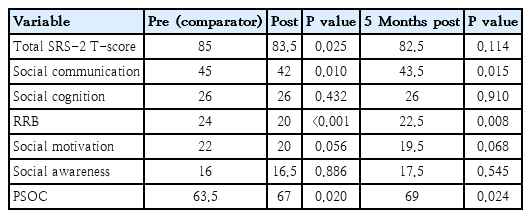
- Original Article
- Nutrition
- Parental support and exclusive breastfeeding at 3 months in West Java, Indonesia: a mixed-methods approach
- Ratu Ayu Dewi Sartika, Fadila Wirawan, Wawan Gunawan, Primasti Nuryandari Putri, Nurul Husna Mohd Shukri
- Clin Exp Pediatr. 2024;67(7):358-367. Published online June 21, 2024
-
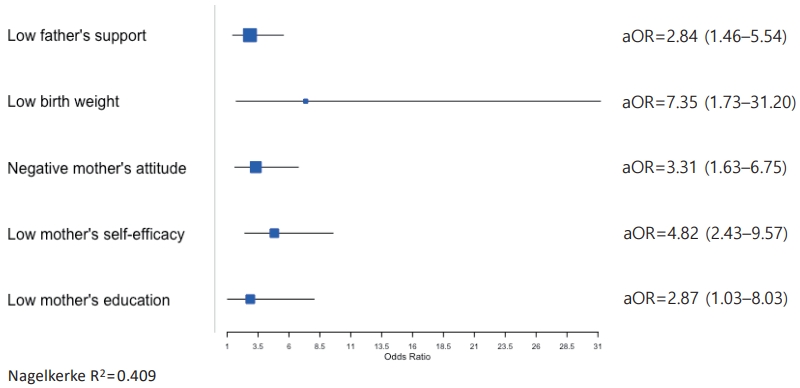
Question: Does paternal support affect exclusive breastfeeding failure?
Finding: Exclusive breastfeeding failure by 3 months was affected by paternal support.
Meaning: Fathers should be included in breastfeeding education and antenatal care.
- Editorial
- Genetics and Metabolism
- Advancing orphan drug development for rare diseases
- Jung Min Ko
- Clin Exp Pediatr. 2024;67(7):356-357. Published online November 17, 2023
-
· Rare diseases present unique challenges and unmet needs for which the development of orphan drugs tailored to them offers hope.
· Despite the hurdles posed by limited patient populations, orphan drug designations from regulatory agencies provide incentives, such as extended market exclusivity and tax credits, that ignite transformative advances.
· Scientific progress in genomics, personalized medicine, and analytics empowers precise interventions by decoding genetic anomalies and encouraging effective treatments.
- Review Article
- General Pediatrics
- Metabolic complications of obesity in children and adolescents
- Hyunjin Park, Jung Eun Choi, Seunghee Jun, Hyelim Lee, Hae Soon Kim, Hye Ah Lee, Hyesook Park
- Clin Exp Pediatr. 2024;67(7):347-355. Published online November 16, 2023
-
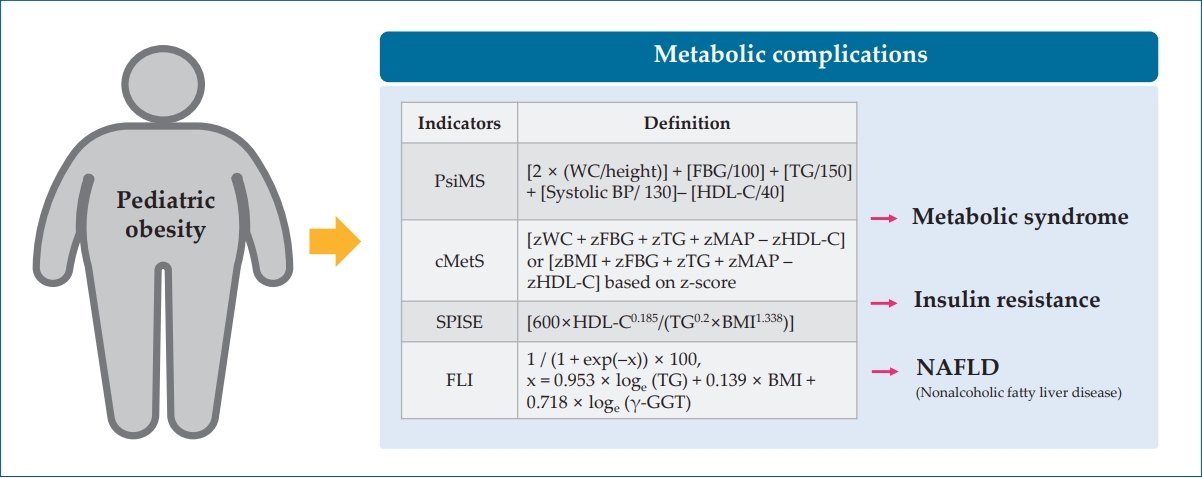
· Pediatric obesity increases the risk of metabolic complications (insulin resistance, dyslipidemia, nonalcoholic fatty liver disease) and long-term cardiovascular diseases.
· A new obesity definition and various indicators (continuous metabolic syndrome score, pediatric simple metabolic syndrome score, fatty liver index) have been proposed to evaluate children’s susceptibility to metabolic disorders.
· Laboratory and body composition tests in pediatric screenings can identify groups at high risk of metabolic complications of obesity.
- Endocrinology
- Association between pre- and postnatal exposure to endocrine-disrupting chemicals and birth and neurodevelopmental outcomes: an extensive review
- Ozge Yesildemir, Mensure Nur Celik
- Clin Exp Pediatr. 2024;67(7):328-346. Published online November 16, 2023
-
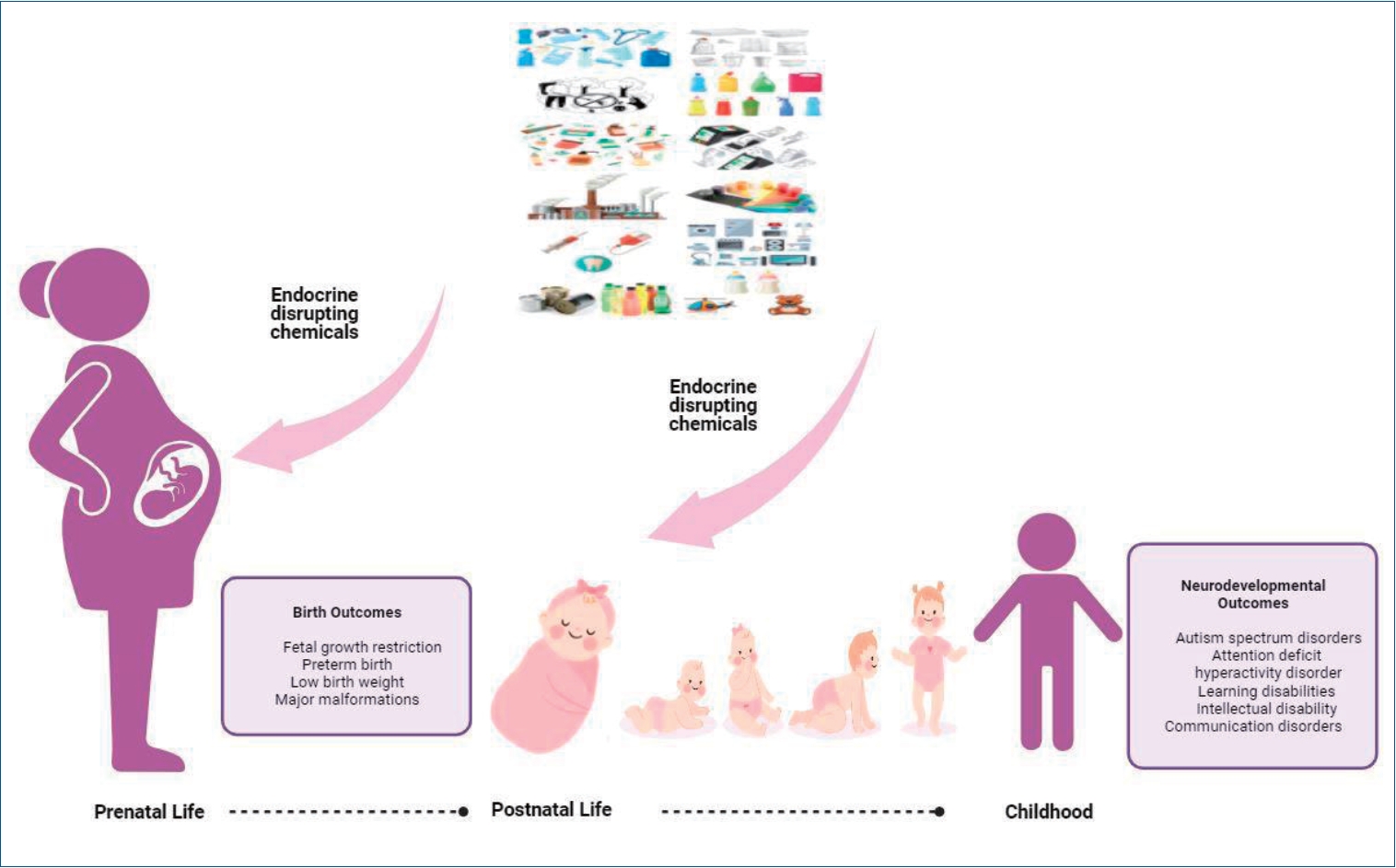
· Sensitivity to endocrine-disrupting chemical (EDC) exposure increases during critical developmental periods (in embryos, fetuses, and neonates).
· Pre- and postnatal exposure to EDCs is associated with fetal growth restriction, preterm birth, and low birth weight.
· Exposure to EDCs during fetal and early postnatal life can have lasting and lifelong neurodevelopmental outcomes, including autism spectrum, attention deficit hyperactivity, and other cognitive and behavioral disorders.
- Genetics and Metabolism
- Development of orphan drugs for rare diseases
- Han-Wook Yoo
- Clin Exp Pediatr. 2024;67(7):315-327. Published online June 28, 2023
-
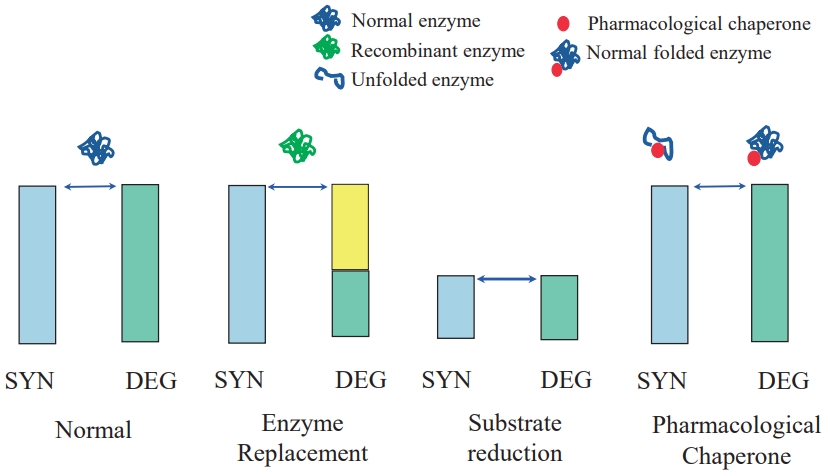
· Orphan disease is a rare disease, primarily affecting newborn and children. Vast majority of orphan diseases has genetic background.
· Orphan disease is individually rare. But as a whole, it is not rare, becoming a great socioeconomic burden.
· The diagnosis of rare genetic disease has been problematic, but recent progress of genome analysis technologies makes it faster and more precise.
· There are many unmet needs as to the curative treatment. However, the number of treatable rare diseases is growingly increasing owing to the development of biotechnology.
· Most orphan drugs are extremely expensive because of numer ous hurdles during the process of drug development as well as small number of patients.
-

-
-
8.02023CiteScore94th percentilePowered by
-
Impact Factor3.2
-
- TOPICS
- ARTICLE CATEGORY
- Editorial Office
-
Korean Pediatric Society
#1606 Seocho World Officetel, 19 Seoun-ro, Seocho-ku, Seoul 06732, Korea
Tel: +82-2-3473-7306 Fax: +82-2-3473-7307 E-mail: office@e-cep.org
Clinical and Experimental Pediatrics is an open access journal. All articles are distributed under the terms of the Creative Commons Attribution NonCommercial License (http://creativecommons.org/licenses/by-nc/4.0/)
Copyright © 2025 by Korean Pediatric Society.











